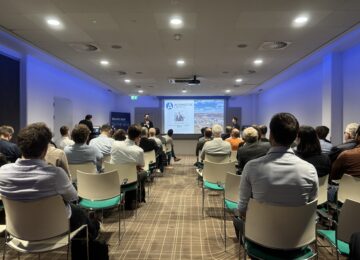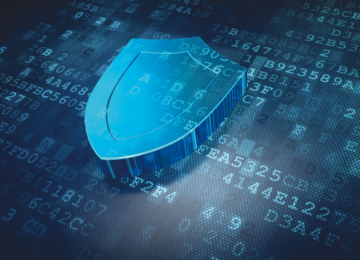Exploratory Report Examines 100 Alternative Solutions for Utilizing Electricity Grid
The Dutch energy transition, with the goal of achieving the 2030 and 2050 climate goals, requires accelerated sustainability of the energy system. This includes radical changes in the generation, transportation and consumption of energy. Moreover, the growing electrification of our society leads to significantly higher loads on the power grid. In this context, Stantec has been commissioned to investigate how the capacity of the electricity grid can be better utilized to accelerate the energy transition, commissioned by Top Sector Energy program System Integration and program Digitization.
The goal of the research is to identify new, often underexplored ideas that can contribute to more efficient use of the power grid. This goes beyond technical innovations to include the removal of social, legal and institutional obstacles. Energy Storage NL's constituency can already facilitate many of these ideas.
More than one hundred solutions were identified through desk research, interviews with industry stakeholders and a workshop. Twelve solutions were selected from this broad selection and are presented in this report. The list of solutions includes:
- Congestion communication
- Balancing residential areas locally
- Reduce phase imbalance
- Autonomous decentralized intervention on the low-voltage grid
- Dynamic capacity planning and trading
- Facilitate flexibility at business (sites).
- DC voltage application
- Utilize other electricity infrastructure
- Site controlled renewable generation and storage
- Off-grid electricity transmission
- Swarm optimization in electric charging
- Alternative fault reserve
The report emphasizes that the research focuses on exploring alternative solutions to use the power grid more effectively. It covers the entire system, not just the responsibility of grid operators or technical innovations. Although no final solutions have yet been identified, the study offers valuable concepts in technical, social, legal and institutional areas. The report calls for further exploration to understand the impact and feasibility of these concepts. Active support through national programs, specific research projects and creative initiatives such as hackathons and competitions is encouraged, with special emphasis on the concrete concepts. In addition, the establishment of a "cross-thinkers" group is advised to stimulate innovation.
Energy transition is a growing challenge in the Netherlands, with an increasing focus on decentralized generation and electrification of energy supply. Grid operators, who are responsible for the physical grid infrastructure, are faced with the task of ensuring reliability and safety, but are facing growing pressures. Smart solutions and grid expansions are currently being explored, but innovations outside the primary remit of grid operators are also being considered.
The Top Sector Energy System Integration, Top Sector Energy Digitization and the Netherlands Enterprise Agency are working together to find innovations that can increase grid utilization. This report offers an exploration of such innovations, with a special focus on solutions that have so far remained underexposed. The study adopted a broad scope, examining technical innovations as well as institutional, legal and social innovations. It also highlights that there are no simple solutions to the complexity of the power grid and the energy sector as a whole. Each of the 12 solutions presented contributes to better utilization of the grid, but there is no "silver bullet" that can solve all challenges. This report serves as an invitation to all stakeholders in the energy transition to build on these concepts. Collaboration and dialogue are encouraged to maximize grid utilization and accelerate the energy transition in the Netherlands.
Other energy storage related solution for utilizing power grid from report:
- Smart energy hubs,
- Vehicle-to-grid (V2G),
- Home energy Management System (HEMS),
- Power-to-Heat (P2H),
- Neighborhood battery, Home battery,
- Grid Battery,
- Smart Battery,
- Battolyser,
- Underground hydrogen storage,
- Flywheel storage,
- Superconducting magnetic energy storage (SMES), Supercapacitor/ultracapacitor,
- PSH (Pumped Storage Hydropower) Energy storage lake or storage basin,
- PSH Expansion linkage foreign hydropower plant,
- PSH Underground hydropower plant,
- CAES Underground compressed air storage,
- CAES Above-ground compressed air storage,
- Storage in warm stones,
- Ground battery/cavern battery,
- Power-to-fuel (conversion),
- Remove battery transportation costs.
Energy Storage NL wants to indicate that the list of ideas is not exhaustive and that new technological developments or lesser-known technologies are not named.
Explanation highlighted solution:
Congestion communication: Targeted communication to encourage awareness and behavior change is quite easy because it does not require systemic interventions.
Reduce phase imbalance: Better phase distribution better utilizes the low-voltage grid, encouraging three-phase devices, technical solutions and process changes.
Balancing residential areas locally: This can be achieved through increased local levels of organization, the use of technical solutions and the pricing of transportation.
Autonomous decentralized intervention: Damping decentralized and autonomous consumption or generation prevents temporary overloading in the low-voltage grid.
Dynamic capacity planning and trading: With explicit capacity planning and trading, dynamic supply and demand becomes possible for transportation shortages.
Facilitate flexibility in business (sites): Promote flexibility through cooperation between companies, grid operators and government, with a focus on collective transmission capacity.
DC voltage application: The throughput can be increased by equipping existing or new (higher) grid sections with DC voltage.
Utilize other electricity infrastructure: Spare the regular grid by using other, existing electricity infrastructure -such as for street lighting and public transportation.
Site control renewable generation and storage: Location control by grid operator and local governments, based on grid capacity, local electricity demand and societal interests.
Off-grid electricity transmission: Mobile, large-scale storage can move electricity between grid sections where exchange is impossible due to grid congestion.
Swarm optimization in electric charging: EVs (de-)charging, guided by smart algorithms or AI. In doing so, it weighs individual interests against the collective interest of the "swarm.
Alternative fault reserve MS: Achieve alternative fault reserve through demand management and feed-in. This enables higher utilization of redundancy capacity.
Source: Topsectorenergie.nl





